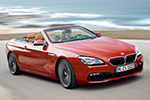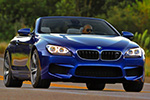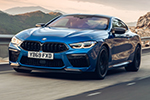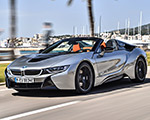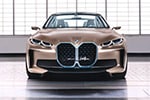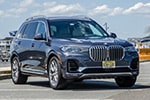Marketing is a tough gig. You have to walk the line between attention-getting and enduring, keeping it catchy without getting too kitsch. BMW hit gold with “The Ultimate Driving Machine,” which arrived in the 1970s courtesy of marketing whiz Martin Puris. It is still widely used today. But there’s another tenet of the brand, decidedly less well known and, in its time, quite controversial. Which is a bit ironic; considering it largely hovers around one simple word: “Joy.”
Why and How? BMW Introduces “Joy”
The famous slogan — “The Ultimate Driving Machine” — was aging by the early 1990s. Munich was witnessing a sales slowdown, at least relative to their rampant success in the 1970s and 1980s, and decided new marketing was the best way to get out of the slump. “There was even a request of me to drop The Ultimate Driving Machine,” claims Carl Flesher, BMW North America’s Marketing Director at the time. BMW AG set its sights on introducing a variant of “Joy of Driving,” or “Freude am Fahren,” to the US. Flesher refused, and — wouldn’t you know it — was reassigned elsewhere in the organization by 1992. But it would still take 15 years before the brand arrived at “Joy.”
As the world economy ground — er, slammed — to a halt in early 2008, BMW NA’s sales similarly nosedived. After selling damn near 300,000 cars in early 2007, the brand managed to move just 195,502 units in 2009. Management shook things up, moving BMW NA CEO Tom Purves to Rolls-Royce and, in the process, removing the last hurdle marketing had to introducing the concept of “Joy” to the American market. “Purves always said that ‘joy’ was not the ideal translation for ‘freude,’” says Patrick McKenna, in-period Head of Marketing Communications for BMW NA. “He was always pretty staunchly against using the word joy in communications.” The new boss — Jim O’Donnell — did not feel the same way. In fact, with the global financial crisis ongoing, he was, if anything, incentivized to find one global marketing solution to keep costs low. The tag became a presence in the US beginning with the Superbowl in February 2010.
“Joy” in Marketing, Joy in Driving
Joy launched, but enthusiasts winced. “Within days,” according to BMW, complaints began. Journalists lambasted the brand for abandoning, as Peter DeLorenzo put it, “one of the most memorable and accurately descriptive advertising themes in automotive history.” Jack Pitney was VP of Marketing at the time, and he defended the campaign. He claimed that independent research painted a bleak opinion of BMW drivers, with people often equating them with aggression and arrogance. “We’re working to be more inclusive and add a bit more humanity in the way we talk about the brand,” he said. He claimed it seemed to be helping and bringing more new customers into the brand. The data indicates that he was right — BMW moved 220,113 cars in 2010.
Perhaps unsurprisingly, BMW enthusiasts and loyalists were not as enthused. Pitney received death threats for “changing the slogan” — even though “The Ultimate Driving Machine” was still running concurrently with the new “Joy” campaign. Even dealers at the time were curious why the famous tagline was being “replaced.” I’ve been shocked, almost horrified, by the number of dealers who’ve come up to me and said, ‘What the hell is this? You’re giving up The Ultimate Driving Machine?’”
Joy has resurfaced as a theme since 2010. Most recently, the “Heart of Joy” leans in. Unchanged, perhaps forever, is the brand’s reliance on “The Ultimate Driving Machine.” While joy may be an apt descriptor for the BMW driving experience, it’s certainly no replacement for a classic.
Source: BMW USA







































